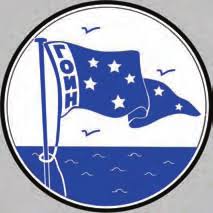Head:
Head of Pharmaceutical and Toxicological Chemistry Department of RUDN-University Institute of Medicine, Dr. Sci. in Biology, Professor
Structural unit: Institute of Medicine.
The Laboratory of Physicochemical Methods of Analysis is a structural subdivision of Pharmaceutical and Toxicological Chemistry Department of RUDN Institute of Medicine. It provides practical classes for medical students and serves as a facility for scientific research conducted by both graduate students and academic staff of the department.
The laboratory is well-equipped with chemical and analytical equipment, necessary for both conducting students' practical works and advanced trainings. The equipment includes standard instruments of chemical analysis (such as precision scales, pH-meters, chromatographic chambers, UV-visualization cameras (transilluminators), precision micropipettes, spectrophotometers, distillers, etc.), as well as high-tech fully computerized modern analytical equipment.
The latter features high performance and comprehensible interface, and is capable of analyzing complex mixtures and substances in ultra-low concentrations. The equipment includes an automatic polarimeter, an X-ray fluorescence spectrometer, an IR-spectrometer with reflected light analysis capacity. All these units enable to conduct qualitative or quantitative analysis with minimal sample preparation, which is critically important in teaching/learning process (due to lower cost of analysis and lower toxic load on the operator since no procedures of extraction or dissolution in strong acids and organic solvents are involved).
Besides, Pharmaceutical and Toxicological Chemistry Department in cooperation with A.V. Dumansky Institute of Colloid Chemistry and Chemistry of Water and All-Russian Scientific Research Institute of Physical-Technical and Radio-Technical Measurements with Rosstandart developed a unique non-destructive testing equipment based on laser light diffusion as well as hardware-software systems to process diffraction patterns and solve inverse (Tikhonov's) problems.
The Laboratory equipment is basically used to:
- Identify and quantify chemical elements ranging from sodium to uranium
- Identify pharmaceutical substances authenticity
- Study components compatibility of finished dosage forms
- Identify and quantify by-products of chemical interaction between excipients and pharmaceutical substances
- Chemical mechanisms behind biological activity of xenobiotics.
- Kinetics of cellular processes.
- Study of micro-elemental composition of plants.
- Environmental toxicology.
- Molecular epidemiology, molecular virology, molecular diagnostics, biochemistry, pharmaceutical chemistry.
Research 033306-3-000. “Analysis of samples obtained from the external surface of the International Space Station (ISS) for the presence of biological macromolecules (DNA, RNA of microorganisms) on the basis of molecular analysis using specific primers of particle-size and elemental chemical composition of space dust. Molecular-biological and phylogenetic analysis of DNA detected in samples from the outer surface of the ISS”. The research was carried out on the premises of Pharmaceutical and Toxicological Chemistry Department of RUDN Medical Institute.
The elemental analysis of the test samples was carried out on the basis of X-ray fluorescence spectrometry. The works were made on EDX-7000 Shimadzu energy dispersive X-ray fluorescence spectrophotometer (Japan) based on a silicon-based drift detector with thermoelectric cooling.
Thus specified elemental composition of the sample was compared with that obtained by an accredited elemental composition analysis method i.e. the atomic absorption spectrometry. The analysis was made on Specter AA-800 spectrometer with electrothermal atomization and Zeeman background correction with acidic cinefaction in a microwave oven.
The results have suggested for the first time the presence of holmium in significant concentrations in extraterrestrial dust. Given the fact that this lanthanide is very rare on Earth, its unexpectedly high presence in the sample can be only accounted for by an assumption that the ISS surface collects some interplanetary space dust and "coarse interplanetary cosmic dust" i.e. the meteoroid substance.
The following methods have been introduced in the curriculum as part of the discipline "Environmental Toxicology" and included in "Chemical Toxicology" textbook:
- application of cellular bio-sensors to determine xenobiotics toxicity;
- use of deuterium depleted water as a controlling factor in pharmacokinetics and toxicokinetics of xenobiotics;
- use of PCR (polymerase chain reaction) in diagnostics and treatment monitoring;
- physico-chemical monitoring of aerosols in the assessment of sanitary-and-hygienic state of the environment.
A General Pharmacopoeia entry 1.2.1.0008.15 Determination of Particle Size Distribution Using Laser Light Diffraction Method included in the new edition of the State Pharmacopoeia of the Russian Federation – SP XIII, 2016.

City
Orenburg, Russia
Conducting joint research
strategies to minimize radiation hazard from cosmic rays aboard airliners
Starting Date - 2016

City
Korolev, Russia
Conducting joint research; practical training site for postgraduate programs
Research Project 033306-3-000 Analysis of samples obtained by the
Starting Date - 2015

City
Moscow, Russia
Conducting joint research; practical training site for postgraduate programs
Training and providing consultations for postgraduate students
Starting Date 2000

City
Moscow, Russia
Conducting joint research; practical training site for postgraduate programs
Training and providing consultations for postgraduate students
Starting Date - 2000